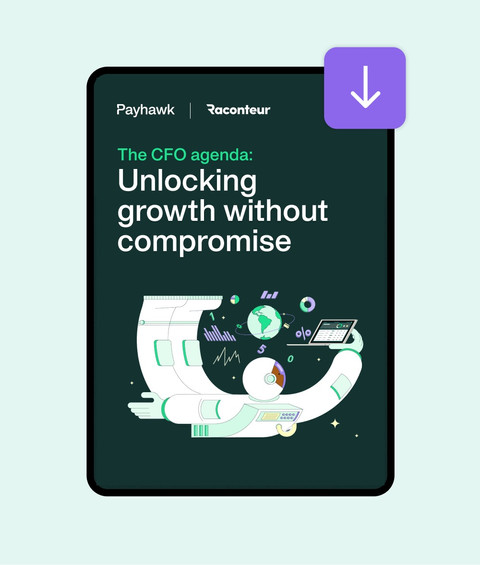
How tech can help CFOs balance standardisation and local nuances



Finance leaders must balance expense policy standardisation with flexibility and customisation to support different regional, team and project needs. How can technology support this?
By submitting this form, you agree to receive emails about our products and services per our Privacy Policy.
Editorial note: This article is a derivative of the Payhawk x Raconteur report, The CFO agenda: Unlocking growth without compromise
Operating across borders can create numerous challenges for CFOs when taking care of expense management. While the goal will often be to standardise the process as much as possible through one global policy, local factors such as tax and payroll regulations mean CFOs must be flexible about what those policies look like in different countries. For companies to balance this effectively, tech is essential.
Here's a rundown of the top five ways corporate leaders expect technology to help them manage their cross-border expenses.
1. Enriched data
Good quality data is essential for managing cross-border expenses. The survey showed that 51% of corporate leaders believe custom fields to enrich data is the most important technology to balance expense policy standardisation with the flexibility to support different needs.
Part of this is ensuring “really good categorisation” of the expenses, says Konstantin Dzhengozov, co-founder and CFO at Payhawk. This enables CFOs to get a more detailed view of spending either on a regional, team or product level, he says.
Having the tech to analyse that data to spot trends is also crucial.
Vineta Bajaj, CFO at Rholik Group, says:
I encourage CFOs to leverage the advanced financial software and analytics tools at their disposal to track expenses in real-time, identify spending patterns and forecast future costs. This data-driven approach allows for better decision-making and a more agile stance regarding strategy adjustment, especially when faced with changing market conditions.
Uncover top CFO insights on driving growth without compromise

2. Customised card controls
Having greater control over corporate card use can also help support CFOs with governance and control, with 49% of respondents saying tech-enabled corporate card controls was the second biggest tech expectation when balancing standardisation with local nuances.
Konstantin Dzhengozov, CFO and co-founder at Payhawk, says:
Technology allows us to really customise the employee experience and also put in place controls on any type of corporate spend.
For instance, companies can issue cards that only work during business hours or that will only work when transacting with a particular supplier.
“It's is also possible to issue cards that can only be used once so there is no risk of the card being used to make any additional purchases,” he says. “Given the technology that we have access to now and the open banking opportunities we have in the UK and Europe, we can get very creative with controls,” Konstantin continues.

3. Flexible approvals
Streamlining the expense approvals process is another way to improve the expense management process, with 46% saying adjustable approval workflows is the third most important tech need for achieving a good balance between policy standardisation and local nuances. Key to this is being flexible around when manual intervention is needed.
“Automation helps with improving the speed of decision making and reducing wastage,” says Vijay Padmanabhan, CFO at UST. For instance, automating certain approvals can not only save time but also potentially reduce expense outlay.
Vijay continues:
Sometimes you get caught in an approval cycle where just a one-week delay in approving a travel expense could result in ticket prices increasing. Even small increases in aggregate over a year could be a big number, so taking out those unwanted approvals means that we are nimbler in how we operate.
4. Smarter reporting
Having access to more detailed expense reporting tools is another way tech can support CFOs when managing expenses, with 34% of respondents citing improved expense reporting as a top tech expectation.
Stuart Maclean, CFO at electronics and manufacturing company Brother UK, says:
Automating processes such as report generation reduces the manual workload, saving time and reducing the risk of errors. Enhanced reporting capabilities can provide insight into spending patterns by department, supplier, or category, enabling informed decision-making.
Additionally, integrating AI into expense management systems can further streamline processes, allowing finance teams to focus on higher-value tasks that drive both business growth and efficiency.” Advanced reporting tools can also ensure revenue and expenses are aligned.
“Getting those projections upfront can give you a futuristic view so you can avoid expense levels going out of whack with revenues,” says Padmanabhan.
5. Simplified travel expenses
Modernising the travel expenses process is also key for more efficient cross-border expense management. Some 32% of respondents said they expect tech to make it easier to manage corporate travel expenses.
Konstantin says:
When I’m travelling, I often meet with people who are stuck with different receipts in their pockets and carrying a lot of expense documents. I’m always puzzled by why this is still a thing in the world that we live in because there are so many solutions out there that can help you digitise the whole process – you don’t need to carry the paper, you don’t need to extract the data manually, everything can be automated.
Not only is that process easier and more user-friendly for the employee who is travelling, but it also makes it easier for those tasked with monitoring expense spend and ensuring those expenses align with corporate policy.
Ready to take the sixth step towards balancing standardisation and local nuances? Book a personalised demo with one of our experts today to learn how Payhawk can help you with multi-entity features, complete visibility, and much more.
The Payhawk Editorial Team consists seasoned finance professionals boasting years of experience in spend management, digital transformation, and the finance profession. We're dedicated to delivering insightful content to empower your financial journey.
Related Articles


Sage Intacct integrations with spend management: Worth it?
